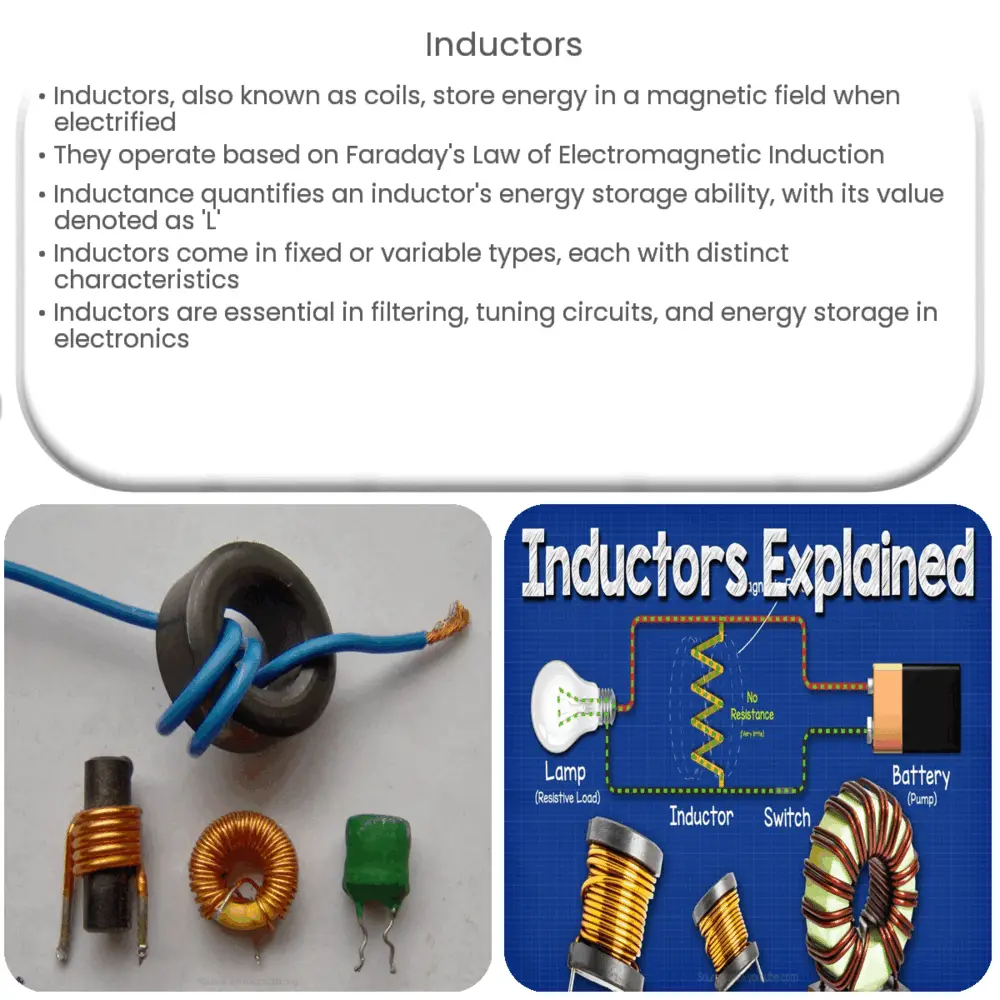Explore the principles of inductors, their types, applications, and unique properties in our comprehensive guide on electronic inductors.

Understanding Inductors: A Comprehensive Guide
Inductors, often known as coils, are a key component in many electronic devices and systems. Their primary function is to store energy in a magnetic field when electrical current is passed through them. This article will delve into the theory and application of inductors.
The Basic Principle of Inductors
An inductor, represented by the symbol ‘L’ in electrical circuits, is typically a coil of wire. The fundamental principle of an inductor is based on Faraday’s Law of Electromagnetic Induction, which states that a change in the magnetic environment of a coil of wire will induce a voltage (emf) in the coil.
When current passes through an inductor, it creates a magnetic field around it. The strength of this magnetic field is proportional to the current that caused it. Hence, if the current changes, so does the magnetic field. This changing magnetic field induces a voltage across the inductor.
Inductance
The capability of an inductor to store energy is quantified by its inductance, denoted as ‘L’ and measured in Henry (H). Inductance is defined as the ratio of the voltage induced in the inductor to the rate of change of current flowing through it. In mathematical terms:
V = L * (dI/dt)
where V is the induced voltage, L is the inductance, dI/dt is the rate of change of current.
Types of Inductors
- Fixed Inductors: These are inductors with a fixed inductance value. They come in different types, like air core, ferrite core, iron core, and more, based on the core material used.
- Variable Inductors: These inductors allow the adjustment of their inductance value. The change can be achieved by varying the number of turns in the coil or the material of the core.
Each type of inductor has its own unique characteristics and is chosen based on the requirements of the circuit design. Inductors play a crucial role in many areas of electronics, which we’ll explore further in the following sections.
Applications of Inductors
Inductors find wide-ranging applications in many areas of electronics and communication.
- Filtering: Inductors are used in electronic filters to block AC while allowing DC to pass, commonly found in power supplies to get rid of unwanted higher frequencies.
- Tuning Circuits: Variable inductors are used in tuning circuits such as AM radios, where the resonant frequency of the LC (Inductor-Capacitor) circuit can be adjusted to receive different stations.
- Energy Storage: In switching power supplies and regulators, inductors are used to store energy. They also find use in transformers, where energy is transferred between two circuits through magnetic fields.
Inductor Properties
Like any other electronic component, inductors come with their own set of characteristics that define their behavior in a circuit. Two main properties of an inductor are:
- Self-Inductance: This is the basic property of an inductor which is the phenomenon of inducing voltage in itself as a result of changing current.
- Mutual Inductance: When the change in current in one inductor induces a voltage in another nearby inductor, it’s known as mutual inductance. This principle is key to the working of transformers.
Conclusion
In conclusion, inductors, with their unique property of storing energy in a magnetic field, play a fundamental role in electronic devices. Understanding the working of inductors helps in creating more efficient and innovative electronic designs. Whether it is filtering out undesired frequencies, tuning in to your favorite radio station, or storing energy in power systems, the humble inductor is an unsung hero in the vast field of electronics.


